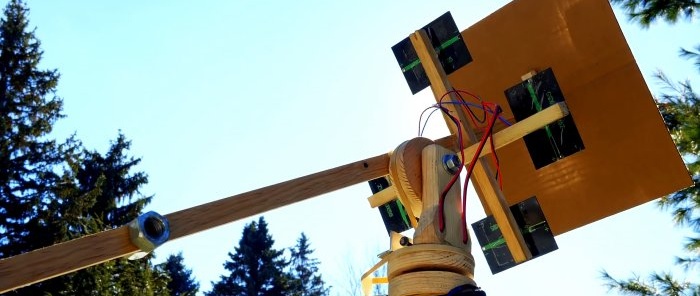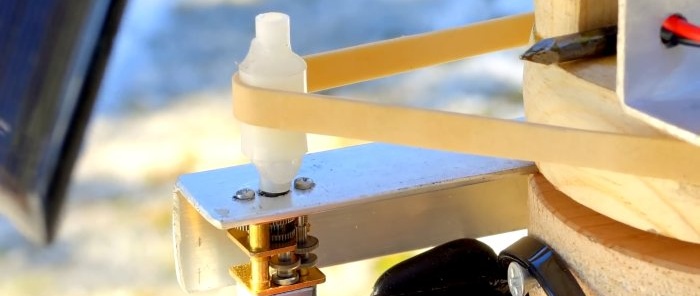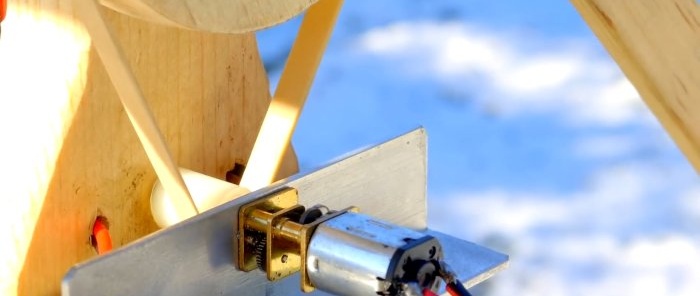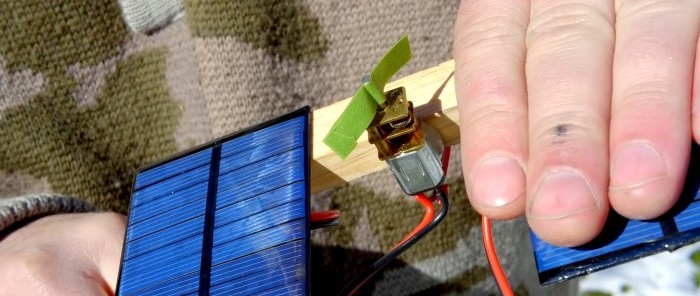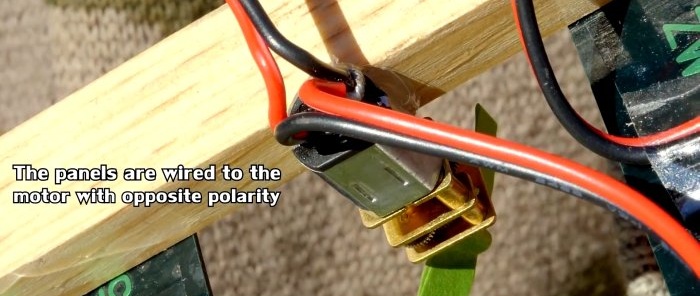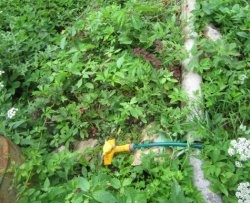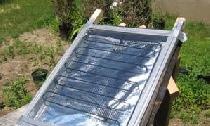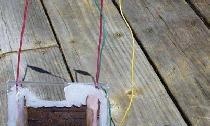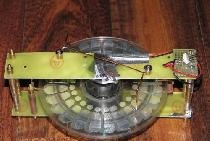This design is interesting because no complex devices are used for its operation: computers, GPS trackers, etc. The device does not require batteries or any other power source to operate. And spare parts and components for its manufacture cost no more than $10. This is a fairly simple model, assembled from scraps of wooden slats and cardboard. But even such a primitive option well illustrates the operation of this solar tracker. (Tracker is a device for tracking the position of something).
What is it for? If you have solar panels, they will be much more efficient at producing electricity if you can get them to follow the sun as it moves across the sky. Or you use something like a parabolic mirror to heat the water in the tank. In this case, it is important that the mirror follows the luminary and its focus does not shift from the target. It is this function of tracking the position of the sun that the assembled model illustrates.
The idea for this solar tracker came to the author of the video while watching the NASA YouTube channel. The work of the Parker space probe was examined there.Its design used small light sensors located in the “legs” of the probe behind heat-protective, light-proof screens. As soon as one of the sensors detected sunlight, i.e. the probe was turned away from the sun so that the heat shield no longer protected the sensors, a signal was sent to the computer to adjust the ship's position, and all the sensors were back in the shadows. In this way, this solar probe can automatically adjust its position so that the heat shield is always facing the Sun. But this NASA solution in our model turned out to be significantly simplified.
What parts will you need?
Automatic sun tracking system without transistors and microcircuits
Instead of using light sensors and a computer to process the sensor information, it uses tiny solar panels to directly run small electric motors. If one of the solar panels is exposed to sunlight, it produces enough energy to drive one of these tiny electric motors, which spins on a rotating panel until the solar panel is back in the shade, causing the motor to turn off. In total, the model uses two motors - one for turning in a horizontal plane, and the other for tilting it up and down.
Motors should be used reversible, i.e. changing the direction of rotation depending on the polarity of the voltage applied to them.Each motor is connected to two solar panels in the same plane so that its axis rotates in one direction when one of the panels is illuminated, and in the opposite direction when the other is illuminated.
This prototype simply used a piece of cardboard to create a shade for the solar panels. But it doesn't matter, the tracking function works the same with anything that casts a shadow. It is necessary to select the size of the screen that creates the shadow and the distance of the panels from it so that it covers them with its shadow when the device is correctly aligned with the sun. But as soon as the sun moves a certain distance, the shadow moves along with it. The solar panel is exposed, one of the motors is turned on and the tracker turns to follow the sun. The illuminated solar panel is again in the shadow, it stops producing current to rotate the motor, and the entire structure stops. The further these panels are from the object in front of them, the more accurately this tracker will follow the sun because they will be exposed to sunlight at a smaller angle.
The limiting factor for moving the panels very far back behind the shadow screen is that the sun will set in the evening and then rise again the next day, at the opposite end of the horizon. And it will shine at such an obtuse angle compared to where the sun tracker was facing at sunset that none of the panels will be in shadow.
To prevent the sun from ever shining on all the panels at the same time, it is wise to install a vertical sunshade between them. A fairly simple modification that is worth making to this design initially.
This is a rather crude model, assembled from pieces of wood and other scraps. But the idea is very interesting.It is possible that it will be useful to many people involved in the production of alternative energy sources.
